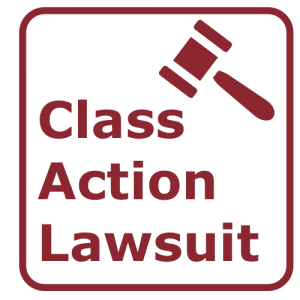Exploring Class Action Lawsuits: What You Need to Know
Course action lawsuits have actually become significantly common in today's legal landscape, with people joining forces to look for redress versus companies and companies. In this discussion, we will certainly explore the ins and outs of course action claims, shedding light on their interpretation, the requirements for declaring, and the potential benefits and downsides included.
The Interpretation of Class Activity Lawsuits
A class action suit is a legal action filed by a group of people that have comparable cases versus an offender. Course activity claims are normally brought when the number of possible complainants is as well large for individual lawsuits to be practical.
Among the crucial elements of a course action suit is that the lead plaintiff, also referred to as the course agent, represents the interests of all the course participants. The court selects the lead plaintiff based on their capacity to relatively and effectively represent the class. The lead complainant functions closely with the course activity attorney to look for and develop a strong instance payment or other solutions in behalf of the entire course.
In order for a course action claim to proceed, the court has to accredit the class. This suggests that the court figures out that the suit fulfills specific requirements, such as numerosity (a big enough variety of class participants), commonality (usual concerns of regulation or truth), typicality (the claims of the lead complainant are typical of the course), and adequacy of representation (the lead complainant and course advise are qualified of representing the course's interests) As soon as the class is licensed, the lawsuit can progress, and any type of judgment or negotiation reached will use to all class members unless they pick to opt-out.
Class activity legal actions serve an essential function in providing access to justice for people that may not have the sources to seek their claims separately. They additionally promote effectiveness in the lawful system by consolidating similar insurance claims right into a single action, minimizing the burden on both the court and the celebrations entailed.
Needs for Submitting a Class Activity Lawsuit

Another demand is that the class should be adequately countless. The precise number of class members required may vary relying on the jurisdiction and the nature of the case. It is usually anticipated that the course should be large sufficient that joining all the specific complainants right into a single lawsuit is extra reliable than having numerous separate suits.
Additionally, it is necessary that the course agent, who is the individual or entity bringing the lawsuit in support of the class, has regular insurance claims and defenses to those of the class members. The representative should also have the ability to properly and relatively stand for the interests of the entire course.

Advantages and Disadvantages of Class Action Legal Actions
Course action suits provide both benefits and downsides for complainants and accuseds involved in the legal procedure. On the one hand, among the considerable advantages of course action claims is that they give a reliable and affordable means for people with comparable claims to go after justice jointly. By consolidating various similar situations right into one legal action, class activities enhance the lawful process and save time and resources for both offenders and complainants.
Another advantage of class action lawsuits is that they permit individuals with limited sources to seek settlement for their damages. In instances where the possible healing is tiny, private legal actions may not be economically sensible. However, by signing up with forces in a course action, plaintiffs can merge their resources and boost their chances of acquiring a reasonable resolution.
Additionally, course activities can advertise social adjustment by holding corporations responsible for their activities. By accentuating widespread misbehavior or malfunctioning items, class actions can press firms to change their practices, enhance item security, or implement reforms.
Nevertheless, class actions likewise have disadvantages. One possible negative aspect is that specific plaintiffs might have limited control over the litigation process and the utmost result of the situation. The lead complainants and their attorneys commonly make vital choices in behalf of the whole class, which may not always align with the individual interests of each course participant.
Furthermore, class actions can be extensive and taxing, usually taking years to get to a resolution. The intricacy and size of these suits can result in delays and prolonged litigation, which can be frustrating for both complainants and offenders looking for a timely resolution.
Steps Associated With a Course Action Suit
The process of a class action lawsuit usually begins with the recognition of a possible course and the filing of a grievance. Once a team of individuals who share similar cases against an accused is determined, the lead plaintiff, or course agent, files a grievance on behalf of the entire class. This problem lays out the supposed wrongdoing and looks for problems or other alleviation for all members of the course.
After the complaint is submitted, the court will certainly figure out whether the case satisfies useful site the needs for class qualification. These demands typically include numerosity (a huge sufficient course), commonality (comparable lawful claims), typicality (the lead complainant's claims are depictive of the class), and adequacy of representation (the lead complainant and their attorney can effectively represent the class's interests)
If the court accredits the course, notification is supplied to all prospective class participants, website here providing the chance to opt-out if they want to seek their very own individual insurance claims - Assertio class action lawsuit. If a sufficient number of class participants remain, the case will certainly continue to the discovery phase, where both sides gather proof and information pertinent to the insurance claims
Complying with exploration, the celebrations might take part in negotiation arrangements or continue to test. If the case mosts likely to trial and the course prevails, the court will certainly determine the proper problems or alleviation to be awarded to the class members.
Current Landmark Class Activity Suits
With a strong understanding of the steps involved in a course activity lawsuit, it is now important to analyze some recent landmark situations that have made a substantial effect in the legal landscape. BioVie class action lawsuit. These situations have not only shaped the method class action claims are carried out but have also produced changes in various sectors
One such spots situation is the Volkswagen discharges scandal, which led to the biggest course action negotiation in vehicle history. This deceptiveness impacted millions of customers worldwide, leading to a course action suit.
An additional significant case is the Johnson & Johnson baby powder lawsuit. Thousands of females filed claims versus the business, asserting that their talcum powder items created ovarian cancer. In 2018, a court granted $4.7 billion in damages to 22 complainants. This instance increased concerns regarding the safety of baby powder and motivated Johnson & Johnson to modify their item labeling.
These current spots situations show the power of class activity suits in holding firms liable for their activities and seeking justice for afflicted people. They work as instances of exactly how course action claims can produce considerable changes and safeguard the legal rights of customers.
Final Thought
In final thought, course activity lawsuits are a click for more legal device that enables a group of people to jointly seek justice for an usual complaint. Comprehending the requirements and actions involved in submitting a course action legal action is critical for people looking for to pursue this lawful opportunity.
One of the essential elements of a class activity claim is that the lead plaintiff, also recognized as the course agent, represents the rate of interests of all the class members.In order for a course activity claim to proceed, the court should accredit the class. This implies that the court identifies that the suit meets certain needs, such as numerosity (a big adequate number of course participants), commonality (usual inquiries of law or reality), typicality (the cases of the lead plaintiff are regular of the class), and adequacy of depiction (the lead plaintiff and course guidance are qualified of representing the course's rate of interests) Once the course is accredited, the legal action can move onward, and any type of judgment or settlement got to will apply to all class participants unless they pick to opt-out.
The procedure of a class activity claim normally begins with the recognition of a possible class and the declaring of a grievance.